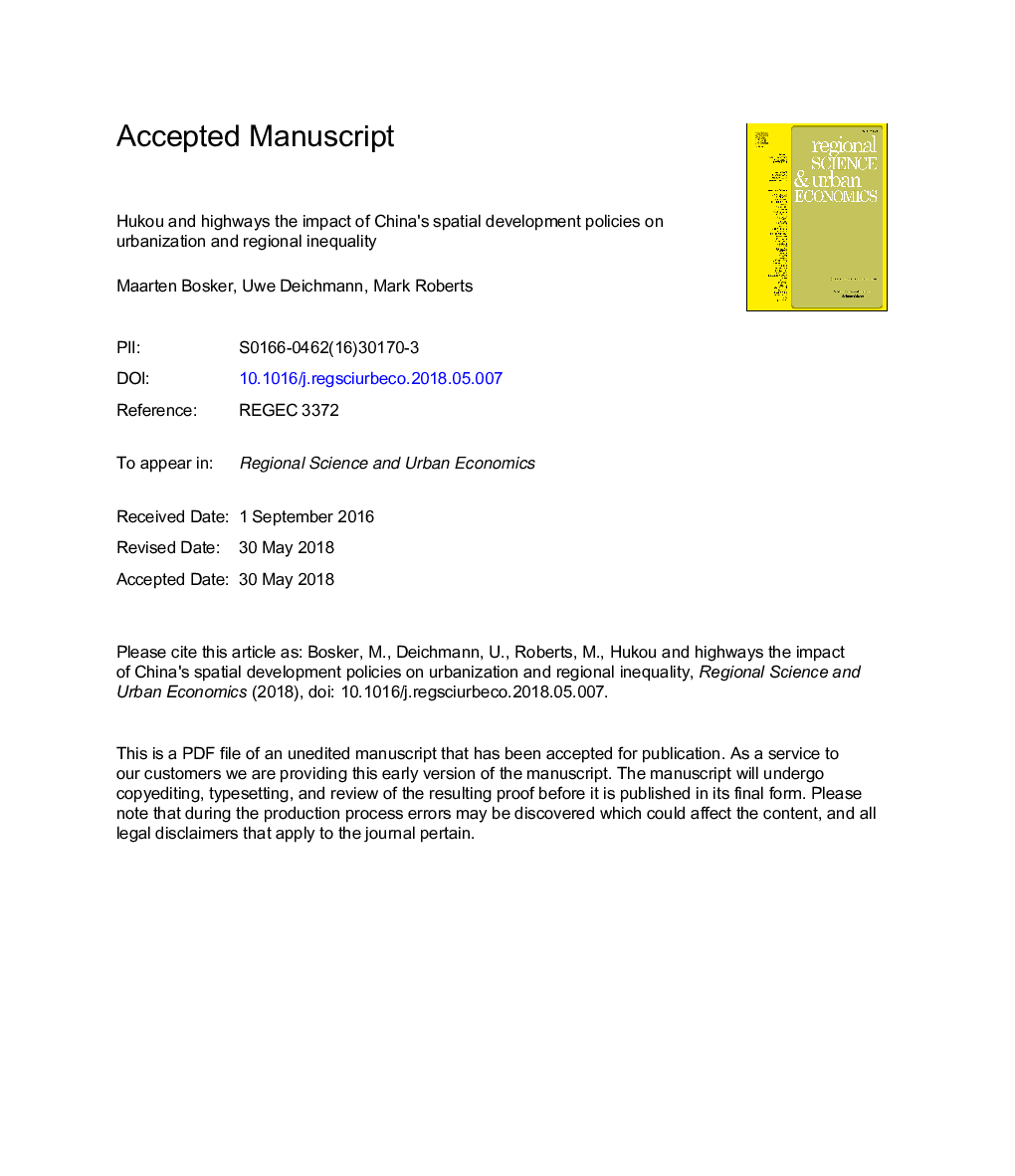| Article ID | Journal | Published Year | Pages | File Type |
|---|---|---|---|---|
| 7383610 | Regional Science and Urban Economics | 2018 | 43 Pages |
Abstract
This paper examines the spatial economic impact of China's two main spatial development policies: restricted labor mobility through the Hukou residential registration system, and the construction of a 96,000â¯km national expressway network (NEN). Using a structural new economic geography approach, we find that these policies have shaped regional economic development and urbanization patterns across China in very different ways. The construction of the NEN has reinforced China's existing core-periphery patterns: initially lagging regions not connected to the NEN have not benefitted much from its construction. By contrast, a removal of the Hukou restrictions is predicted to result in much more widespread welfare gains, allowing all people to benefit by moving to where they are most productive. Interestingly, it would even promote urbanization in currently lagging (inland) regions, mostly by stimulating rural outmigration.
Related Topics
Social Sciences and Humanities
Economics, Econometrics and Finance
Economics and Econometrics
Authors
Maarten Bosker, Uwe Deichmann, Mark Roberts,
